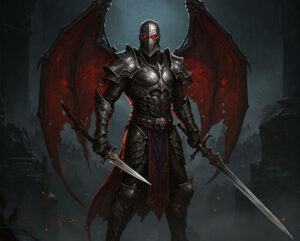The XCOM franchise originated in the late 1990s with the release of the critically acclaimed title “UFO: Enemy Unknown” (also known as “X-COM: UFO Defense” in North America) in 1994. Developed by Mythos Games and MicroProse, this turn-based tactical strategy game introduced players to a world where humanity was under siege from extraterrestrial forces. With its innovative blend of strategic resource management, squad-based combat, and an intricate storyline, XCOM set a new standard for tactical games and captured the imaginations of video game enthusiasts worldwide.
Following the success of its predecessor, the franchise saw several sequels and spin-offs, with varying degrees of success. The original series maintained a dedicated fanbase, but it wasn’t until the reimagining of XCOM in 2012, with “XCOM: Enemy Unknown,” that the franchise truly revitalized itself. This title successfully brought the series to a modern audience, featuring updated graphics, refined gameplay mechanics, and a more accessible approach that appealed to both new players and veteran fans alike.
Building on this resurgence, the subsequent release of “XCOM 2” in 2016 expanded upon its predecessor’s foundation, offering a deeper and more immersive tactical experience. It introduced new features such as procedurally generated maps, diverse alien foes, and an engaging storyline that navigated themes of resistance and rebellion, making it one of the most significant entries in the franchise. This evolution reflects not only the growth of the XCOM franchise but also the changing landscape of tactical strategy games. As players continue to seek engaging narratives combined with intricate gameplay, XCOM remains a pivotal part of the genre, cementing its legacy as a benchmark for future titles.
Overview of XCOM 2
XCOM 2, the highly acclaimed sequel to XCOM: Enemy Unknown, expands on the franchise’s signature blend of turn-based tactics and squad management, offering players a richer and more immersive experience. Set in a dystopian future where alien forces have taken control of Earth, the game presents a formidable challenge for players who assume the role of the Commander leading a resistance against the oppressive regime. The narrative framework not only sets the stage for exhilarating combat but also provides context and depth to the missions undertaken by the player.
The game’s core gameplay mechanics revolve around tactical decision-making and resource management. Players engage in turn-based battles, strategically positioning their soldiers, utilizing cover, and utilizing distinct class abilities during combat. Each soldier has a unique set of skills and attributes, allowing for varied playstyles and facilitating individual character development. The incorporation of flanking maneuvers and environmental interactions enhances the tactical gameplay, encouraging players to think critically about their approach to each skirmish.
In addition to combat, XCOM 2 introduces an intricate base management system. Players must develop their mobile headquarters, the Avenger, by constructing facilities that support mission planning, research, and the training of soldiers. The oversight of resources, personnel assignments, and upgrades plays a crucial role in the success of the resistance. Furthermore, interactions with diverse factions and characters within the game deepen the narrative, offering players choices that impact the game’s world and overall outcome.
The customization features available allow players to design and personalize their soldiers, creating a connection to them as they navigate the trials of warfare. From appearance to skill sets, these elements foster a deeper investment in the gameplay experience. As players face increasingly challenging missions, the combination of sharp tactical combat, base management, and character progression makes XCOM 2 a compelling title that caters to both strategy enthusiasts and newcomers alike.
Graphics and Visuals
XCOM 2 represents a significant advancement in graphical fidelity over its predecessor, XCOM: Enemy Unknown. The improvements in visual design are evident across various aspects, including art style, environment design, character models, and animations, all of which contribute substantially to creating an immersive experience for players.
The art style of XCOM 2 maintains the signature aesthetic of its predecessor while incorporating a more vibrant color palette and enhanced textures. This visual overhaul not only helps to distinguish the environments but also makes them feel more alive. The use of dynamic lighting and shadows adds depth to the scenes, ensuring that each setting, whether it be an alien-infested cityscape or a covert operation in a lush jungle, feels distinct and engaging.
Environment design in XCOM 2 is meticulously crafted to evoke a sense of realism, balancing destructible elements with strategic layouts. Players will notice significant advancements in the detail of maps, as the developers have implemented diverse terrains and complex structures that enhance tactical gameplay. The environments are not just backdrops; they present obstacles, cover opportunities, and interactive components that players must navigate tactically.
Character models have also seen considerable enhancements. The level of detail in soldier customization has increased, allowing players to create unique avatars with varying features and gear. Additionally, alien species are designed with meticulous attention to detail, showcasing their diverse physiology and visual characteristics, which enhances their role as formidable foes. These character improvements are complemented by high-quality animations, which ensure that movements are fluid and realistic, whether in combat or cutscenes.
Overall, the graphical upgrades in XCOM 2 are a testament to the developers’ commitment to providing an engaging and visually stunning experience. The combination of refined art style, intricate environment design, improved character models, and dynamic animations contributes to the game’s ability to captivate players and immerse them in its alien-infested narrative.
Gameplay Mechanics and Strategy
XCOM 2 delivers an immersive experience through its intricate gameplay mechanics, centered around tactical squad-based combat. Players command a team of soldiers, making critical decisions that significantly affect the outcome of battles and the trajectory of the overarching campaign. Each mission is imbued with the weight of strategy, demanding players to assess their environment, manage resources, and capitalize on their squad’s unique skill sets to gain the upper hand against formidable alien adversaries.
Cover plays a pivotal role in the combat system. The game encourages players to utilize the terrain to shield their soldiers from enemy fire. Engaging enemies while positioned behind cover not only mitigates damage but also enhances the effectiveness of counterattacks. Thus, players must evaluate the battlefield, considering factors such as elevation and obstacles, to maximize their tactical advantage. The cover mechanics foster an environment of strategic depth, allowing for meticulous planning and execution in each encounter.
XCOM 2 introduces various soldier classes, each with distinct abilities and roles that contribute to the overall strategy. From the versatile Ranger, equipped for close-quarters combat, to the sharpshooting Sniper capable of taking out threats from a distance, the classes bring a rich variety to gameplay. Combining classes effectively allows players to create balanced teams, capable of adapting to different challenges. Moreover, the game encourages experimentation with class upgrades, providing opportunities to tailor soldiers’ abilities to suit individual playstyles or respond to specific mission requirements.
Overall, the game encapsulates a complex interplay of decision-making and tactical gameplay, where every choice can lead to success or failure. Engaging in XCOM 2’s demanding battlefield scenarios requires foresight, adaptability, and a deep understanding of its mechanics, enriching the player experience while reinforcing the core elements of strategy that define the series.
Difficulty and Accessibility
XCOM 2 provides a diverse array of difficulty settings designed to accommodate players with varying skill levels, ranging from beginners to seasoned veterans. The available options include Rookie, Veteran, Commander, and Legend, each increasing in challenge and complexity. Players new to the franchise or tactical gameplay may find the Rookie setting to be an ideal introduction, offering a more forgiving experience that allows them to learn the game mechanics without the pressure of high stakes. As players become more comfortable, they can increase the difficulty, thus ensuring a gradual and engaging learning curve.
In addition to these difficulty settings, XCOM 2 incorporates several accessibility features. These features emphasize inclusivity, ensuring that a broader audience can enjoy the game. For instance, the ability to customize the game experience allows players to tweak various settings like enemy AI and mission settings. This flexibility ensures that players can craft a challenging experience that aligns with their personal preferences, whether they seek a more relaxed gameplay or a punishing trial.
However, even with these options, players may face certain challenges. The complexity of tactical combat and resource management can be daunting for newcomers, especially as the game encourages strategic thinking. The permadeath feature, a hallmark of the XCOM franchise, adds an additional layer of difficulty where players must weigh their decisions carefully, knowing that losing soldiers can significantly impact the overarching campaign. Nevertheless, the combination of difficulty options and accessibility features creates a welcoming entry point, allowing both new players and veterans to find enjoyment in the intricacies of XCOM 2.
Community and Modding Support
The community surrounding XCOM 2 plays a pivotal role in the game’s enduring appeal, contributing to its longevity through active engagement and ongoing support. One of the most striking aspects of XCOM 2 is the robust modding capabilities it offers, allowing players to create and share content that enhances and expands their gaming experience. The modding community has flourished since the game’s release, with dedicated creators producing a wide array of modifications that cater to various gameplay preferences.
Mods can significantly improve game mechanics, adjust difficulty levels, and introduce new features, ensuring that players always have fresh content to explore. For instance, some mods focus on balancing the game mechanics for a more equitable challenge, while others might introduce entirely new factions or classes, thus enriching the strategic complexity that XCOM 2 is known for. Additionally, there are narrative-driven mods that provide new story arcs and missions, allowing players to experience the game from different perspectives.
The integration of community-created content can dramatically alter gameplay. Players often report enhanced enjoyment and renewed interest in XCOM 2 through these modifications. The Steam Workshop provides an accessible platform where players can easily browse and subscribe to mods, facilitating a seamless downloading process that encourages experimentation and customization. This level of support and involvement from the community not only extends the life of the game but also fosters a creative atmosphere where players can collaborate and share their insights.
Ultimately, the community and modding support surrounding XCOM 2 are instrumental in maintaining its relevance in the gaming landscape. With a vast library of user-generated content readily available, players can tailor their experiences, ensuring the game remains engaging for both newcomers and veterans alike. The combination of community support and modding potential is a testament to XCOM 2’s sustained popularity and its capacity for immersive gameplay.
Comparing XCOM 2 to Its Predecessor
XCOM 2 builds upon the foundation laid by its predecessor, XCOM: Enemy Unknown, in several significant ways. The evolution of gameplay mechanics is perhaps the most evident distinction between the two titles. While XCOM: Enemy Unknown revitalized the turn-based strategy genre with its unique blend of tactical combat and resource management, XCOM 2 enhances these elements by introducing greater strategic freedom and flexibility. The overall pacing has improved, enabling players to engage in a more dynamic combat experience. The addition of new classes, abilities, and an expanded set of enemy types in XCOM 2 offers a richer tactical landscape, challenging players to adapt their strategies continually.
Narrative depth is another area where XCOM 2 shines. The sequel takes a more intricate approach to storytelling, set in a world where humanity has succumbed to alien rule. This environment presents a darker, more complex narrative that encourages player agency and immersion. Unlike the straightforward narrative of XCOM: Enemy Unknown, which focused on humanity’s defense against an alien threat, XCOM 2 delves into themes of resistance and rebellion. The game allows players to engage with the narrative through various side missions and objectives, adding layers to character development and world-building.
In terms of tactical improvements, XCOM 2 introduces new features such as the concealment mechanic and environmental destruction, which provide additional depth to the gameplay. The concealment mechanic allows players to engage the enemy on their terms, creating opportunities for ambushes and strategic planning absent in the original. Furthermore, destructible environments encourage players to think creatively, fostering a sense of innovation in tactics. Overall, these enhancements make XCOM 2 not only a worthy successor but also an engaging expansion of the core ideas presented in XCOM: Enemy Unknown.
User Reviews and Critique
User feedback is integral to understanding the reception of XCOM 2, as players share their personal experiences through various online platforms and forums. The game, known for its strategic gameplay and tactical depth, has garnered both praise and criticism from the gaming community. Positive reviews frequently highlight the game’s challenging AI and the depth of customizability available to both characters and gameplay scenarios. Many players appreciate the variety of strategies that can be employed, suggesting that the decisions made throughout campaigns often carry significant weight, leading to a rewarding experience.
One common sentiment in positive critiques centers around the immersive story and the high stakes present in each mission. Reviewers often mention how the game manages to keep players engaged through the evolving narrative that unfolds as the story progresses. Additionally, the perma-death feature adds a layer of tension that many players find invigorating, as losing a beloved character can lead to an emotional investment in the gameplay.
Conversely, negative critiques often focus on the game’s steep learning curve and the frustration that can arise from overly punishing mechanics. Some users have voiced concerns regarding the AI behavior, claiming that enemy tactics can at times feel unpredictable, leading to a sense of unfairness during encounters. Moreover, while many players appreciate the strategic depth, others have pointed out that the difficulty may detract from the enjoyment for those less experienced with similar games.
Another point of contention within user reviews is the length of playtime required to fully experience XCOM 2. Some critics express disappointment over the time investment needed to achieve completion, suggesting that it may not hold the attention of all players. Overall, user reviews reveal a rich tapestry of opinions, encapsulating the multifaceted nature of the experience that XCOM 2 provides.
Conclusion: Is XCOM 2 Worth Your Time?
In evaluating whether XCOM 2 is worth your time, several factors have emerged as crucial to making an informed decision. The game successfully revives the tactical strategy genre, combining intricate gameplay mechanics with an engaging narrative that captures the essence of resistance against alien oppression. Players are often drawn to its compelling storyline and the moral quandaries presented throughout the campaign, which provide a rich experience beyond mere gameplay.
One of the noteworthy aspects of XCOM 2 is its emphasis on player choice. The strategic decisions made can lead to significantly different outcomes, making replayability a strong suit of the game. The customizable soldier options and diverse alien encounters also ensure that no two playthroughs are entirely alike. This layer of complexity enhances the overall enjoyment for those who appreciate strategy games that challenge their tactical thinking.
Moreover, the developers have invested considerable effort into post-launch support with expansions and updates that have introduced new content, further enriching the gameplay experience. The addition of new classes, missions, and enemy types keeps the game fresh and encourages a longer engagement, especially for those who enjoy exploring every strategic avenue available.
However, it is essential to acknowledge that XCOM 2 may not cater to every type of gamer. Those who prefer fast-paced action or simpler gameplay mechanics may find the tactical nature of XCOM 2 to be daunting or time-consuming. For dedicated strategy enthusiasts, however, the game represents a robust and fulfilling investment of time that offers substantial rewards in the form of strategic depth and player agency.
In conclusion, if you are someone who enjoys rich strategy games with a nuanced narrative and significant player input, XCOM 2 is undoubtedly worth your time. Its combination of tactical gameplay and immersive storytelling presents an experience that is rewarding and engaging, justifying the hours spent in the game’s immersive universe.





